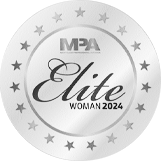Questions? We'll Answer.
Let's answer the questions you're definitely not the first (or the last) to ask.
- You [and your co-borrower, if applicable] will need the following documents when applying for a loan:Social Security Number
- 2 Years Proof of Employment (If self-employed then please provide most recent 2 years business tax returns and current YTD profit/loss statements as well as balance sheets)
- 2 Most Recent Paystubs
- 2 Most Recent Years of Tax Documents (W-2 statements and tax returns)
- Bank Account Information (2 Most Recent months of asset statements-checking, savings, retirement, etc.)
- Credit Information (Provide details of any new accounts or accounts not currently reporting on your credit report such as: )
- Monthly Expenses (Housing, etc.).
Most Non-QM loans require at least 10–30% down, depending on your financial profile.
It depends on what type of mortgage you're trying to qualify for. FHA loans have lower credit score requirements, but you'll have to pay fees that other programs don't charge. Typically, a credit score of 620 or higher is required for a conventional loan, but a higher credit score can save you money by helping you qualify for a lower interest rate.
A credit score of 580 is needed for a 3.5% down payment. If your score is between 500–579, you’ll need a 10% down payment.
While at least a 640 score is preferred, applicants with lower scores can still qualify through manual underwriting.
Most lenders require a credit score of at least 700, though some may prefer 720+ for the best rates.
No. You remain the homeowner as long as you meet the loan requirements, including living in the home and maintaining it.
There are many factors that could impact the type of loan that you qualify for. You could reach out to your local loan originator to find out what loan you qualify for. If you need more information on the various types of loans, check out our Loan Types page.
Yes, some Non-QM lenders accept lower credit scores and recent bankruptcies or foreclosures. However, interest rates may be higher.
No, you don't have to have a 20% down payment to qualify for a conventional loan. First-time homebuyers can qualify with as little as 3% down.
No, there are no specific income limits for FHA loans. However, you must show you can afford the mortgage payments based on your income and debts.
Use the official USDA Property Eligibility Map to search your address.
Yes, but you'll likely need exceptional credit and income. Some lenders may require private mortgage insurance (PMI).
The loan is typically repaid when the borrower sells the home, moves out permanently, or passes away. The proceeds from the sale usually cover the balance.
An appraisal is the process of having a licensed and trained individual report on the worth of a home. This individual is completely unbiased and will be able to provide the lender, buyer and seller an accurate value of the home. Having an appraisal done on the home establishes protection for all parties involved. They will determine if repairs are needed, if the price is fair in comparison to other homes within the area, and a detailed report calculating the true value of the home.
Yes, if your down payment is under 20%. However, PMI can be removed once you reach 20% equity.
No. FHA loans are only for primary residences that you plan to live in.
No, both first-time and repeat buyers can use this program.
Not necessarily. Rates can be comparable or even lower depending on your qualifications and market conditions.
Yes. Through a HECM for Purchase, you can use the loan to buy a new primary residence.
An interest rate is the amount it will cost you to borrow the principal loan amount. It could either be a variable or fixed amount and will always be expressed in percentage form. An APR measures a mortgage and includes the interest rate plus discount points, closing costs and broker fees. APR's are expressed in percentage form.
Conventional loans are available to repeat buyers, investors, and refinancers.
Yes, FHA loans require mortgage insurance. You’ll pay an upfront premium of 1.75% and annual mortgage insurance ranging from 0.45% to 1.05% of the loan amount.
On average, 30 to 45 days—but it can vary based on lender and USDA processing times.
Absolutely. Jumbo loans are refinanceable, although the requirements can be just as strict as the initial loan.
No. The proceeds from a reverse mortgage are considered loan advances and are not taxable income.
A lender will evaluate your credit, income, assets, and debt to determine eligibility.
Yes, through the FHA Streamline Refinance program which offers simplified documentation and underwriting.
Single-family homes, modular homes, and new construction—as long as the property meets USDA guidelines.
Due to the documentation required, it may take slightly longer than conforming loans—typically 30–45 days.
If the move is permanent, the loan becomes due and payable. Temporary stays generally do not trigger repayment.
Refinancing is when you replace your current loan with a new loan. This new loan should include improved terms and features than the prior loan. If your current loan is too expensive or risky, then you should look into refinancing. Typically, refinancing is beneficial because you can: Save money Lower your payments Shorten your loan term Change your loan type Consolidate your debts Pay off a Loan with a Due-date or balloon payment
You can purchase primary homes, vacation homes, and even investment properties.
FHA loan limits vary by county and are updated annually. Check HUD’s website for your area’s cap or contact us to schedule a free consultation.
Yes, USDA offers streamlined refinance options for current USDA borrowers.
Yes, refinancing is possible if the home's value has increased or better loan terms are available.
Typical closing costs vary based on a lot of factors, but they're generally between 2% and 5% of your total loan amount. These factors can influence how much you pay in closing costs:
- Loan Origination fees
- Appraisal fees
- Discount points
- Title Insurance
- Taxes
- Surveys
- Credit Report charges
- Deed-recording fees
- Title Searches
Yes, you can qualify for a mortgage as long as the seasoning requirements for the specific loan type have been met. This is something you can discuss with your Loan Originator in detail.
The major difference between getting prequalified and getting preapproved is that:
- Getting prequalified gives you a loan estimate based on your self-reported financial status (debt, income, credit score, etc.)
- Getting preapproved is gives you an exact loan amount based on a lender verifying your financial status
Getting prequalified gives you a rough estimate of what loan amount you might qualify for. It's based on your self-reported information, though, so it's typically not as accurate as preapproval. Preapproval is more in-depth, takes more time, and requires a hard credit check, while prequalification is almost immediate and only requires a soft credit check.
Both processes are great for potential buyers to pursue, but preapproval generally holds more weight than prequalification because a lender has thoroughly vetted the information.
Free Guides & Resources
Our favorite kind of buyer? A confident one. Brush up on your loan knowledge, get an accurate quote, and let's get to it.











